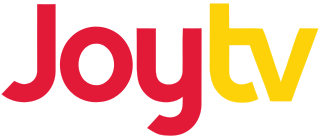Sale of CHUM Limited to Bell Globemedia

In 2006, following the death of longtime chairman Allan Waters, CHUM Limited decided to cease operations and sell its broadcasting assets to a willing bidder. Bell Globemedia (later CTVglobemedia, now Bell Media) announced a $1.7 billion takeover offer for CHUM on July 12 of that year. [1]
Bell Globemedia initially intended to retain CHUM's Citytv television system and its five large-market stations, as well as the company's numerous specialty channels; Bell would also sell off the smaller-market A-Channel stations along with several specialty channels. [1] Rogers Communications originally placed a bid to purchase the A-Channel stations; CKX-TV (channel 5) in Brandon, Manitoba; Alberta educational station Access; and specialty channels SexTV and Canadian Learning Television.
However, the Canadian Radio-television and Telecommunications Commission (CRTC) denied CTV's acquisition of the Citytv stations, as all five stations – CITY-TV (channel 57) in Toronto, CKVU-TV (channel 10) in Vancouver, CKEM-TV (channel 51) in Edmonton, CKAL-TV (channel 5) in Calgary and CHMI-TV (channel 13) in Portage la Prairie-Winnipeg – were based in markets where CTV already maintained owned-and-operated stations (O&O), and therefore CTV's retention of Citytv would have violated a provision in the Commission's media ownership limits, which bar broadcasters from owning two English-language television stations in major metropolitan areas. CTV was, however, allowed to retain control of the A-Channel stations (a few of the A-Channel stations were based in cities adjacent to the major five metropolitan areas such as Victoria, British Columbia; London and Barrie, Ontario; CRTC rules permit English-language commercial twinsticks in major markets provided that the stations have differing cities of license) and all of CHUM's specialty channels.
Soon afterwards, Rogers Communications placed a new bid to purchase the Citytv system as a complement to its own Omni Television, a system of multicultural stations that incorporate programming in various languages. [2]
CTVglobemedia
After Bell Globemedia's bid to purchase Citytv stations, and sell off the A-Channel stations, CKX-TV, and several other digital specialty channels denied by the CRTC, the outcome resulted in CTV putting the Citytv stations in a trust held by corporate lawyer John McKellar in the interim while it searched for a buyer. [3] Rogers Communications, which had originally bid on the A-Channel stations prior to the CRTC decision, placed a new bid for the Citytv stations a few days later, which was approved by the CRTC on September 28, 2007.
CHUM Limited officially ceased operations on June 22, 2007. With the exception of the Citytv stations and its French language music specialty channels MusiquePlus and Musimax, all of the CHUM Limited properties – including the A-Channel stations, CKX-TV, (an independent television station in Brandon, Manitoba), its cable specialty services (such as MuchMusic, Star!, Space, Bravo! and CP24) and radio stations – became part of the restructured CTVglobemedia on that date.
A-Channel's original 2007–08 schedule was announced in early June, before the takeover received CRTC approval. By September, CTV had radically altered the system's schedule to give A-Channel broadcast rights to several series that CTV had not been able to find time slots for on its own fall schedule, including Two and a Half Men , Scrubs , 30 Rock and the Canadian-produced series Jeff Ltd. The A-Channel system along with the Atlantic Satellite Network were later rebranded as A on August 11, 2008. [4]
CTVglobemedia announced on November 16, 2007, that it and the channel's co-owner Comcast would sell their remaining interest in specialty channel OLN to Rogers Communications. Nearly five months later on March 8, 2008, the company announced that it would sell Canadian Learning Television to Corus Entertainment.
Rogers Communications
Rogers Communications had wanted to gain a multicultural station in Vancouver for a long time, but was either denied by the CRTC and competitor station CHNM-TV (channel 66; branded as "Channel M"), or was outbid while vying for local stations up on the market by other broadcasters. In 2005, opportunity arose when Rogers was given permission to purchase religious broadcaster Trinity Television, owner of Fraser Valley television station CHNU-TV (channel 66) and the license for Winnipeg station CIIT-TV (channel 35).
In 2007, both Multivan Broadcasting (owner of CHNM) and Rogers submitted bids for television stations in Edmonton and Calgary during a call by the CRTC for broadcasters to submit new broadcast licence applications. The licences were awarded to Rogers, which launched CJCO-TV (channel 38) and CJEO-TV (channel 56) as religious stations in the respective markets on September 15, 2008. Shortly afterward, Multivan entered a tentative deal to sell CHNM to Rogers, citing the loss of the Calgary and Edmonton licenses as leaving the company no longer able to compete as a standalone station. On November 6, 2007, Rogers also announced the intention to sell its CHNU-TV and CIIT-TV to S-VOX. [5] Rogers' acquisition of CHNM [6] and its sale of CHNU and CIIT to S-VOX were both approved by the CRTC on March 31, 2008.
On September 1, 2008, CHNM was relaunched as an Omni Television station (branded as "OMNI British Columbia"), [7] while S-VOX relaunched CIIT and CHNU respectively as "Joytv 11" and "Joytv 10" (in reference to the cable channel allocations of both stations in their respective markets).
In addition, Rogers applied to purchase the Citytv stations for an estimated $375 million. [2] Media analysts suggested that with a more powerful media conglomerate such as Rogers behind them, the Citytv stations would effectively expand to become Canada's fourth full-fledged commercial television network, in effect if not immediately in name. The Citytv transaction was approved by the CRTC on September 28, 2007, with Rogers officially becoming the system's new owner on October 31. Rogers acquired the remaining interest in OLN from CTVglobemedia and Comcast on August 31, 2008.







